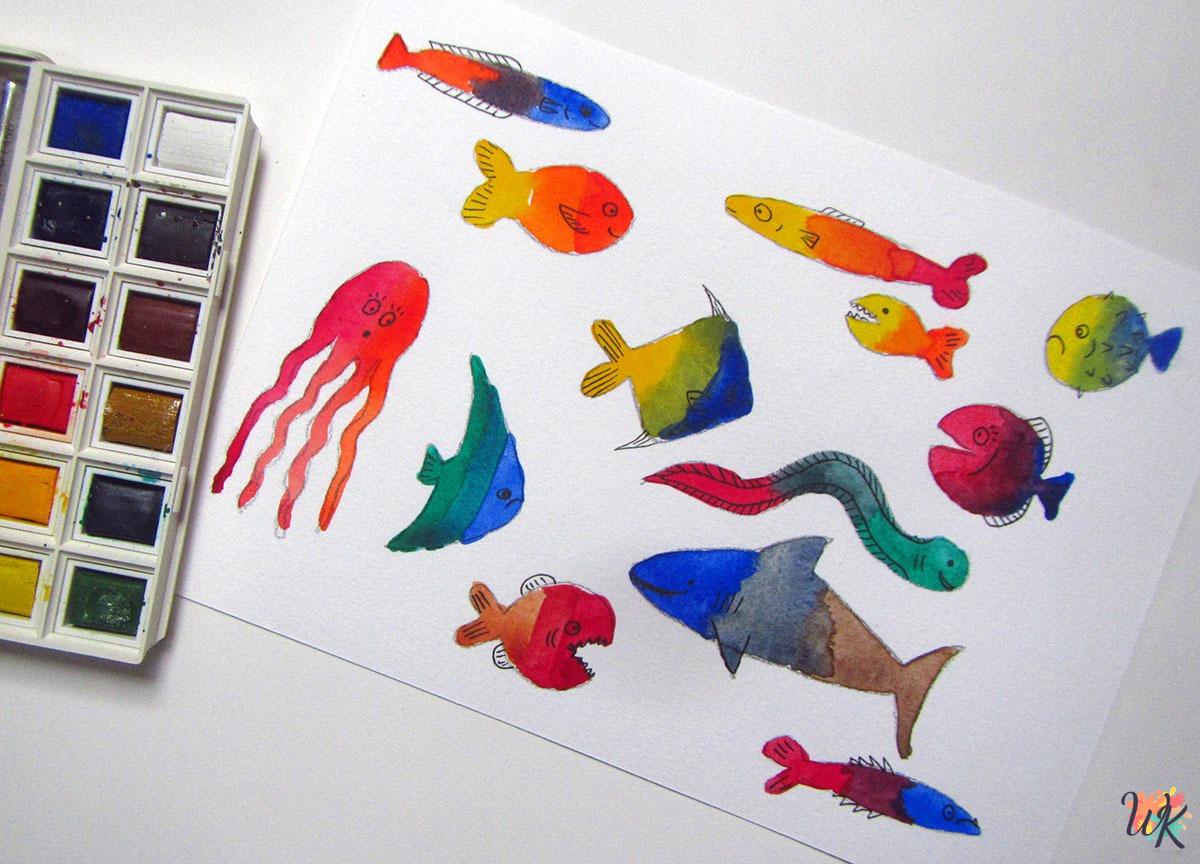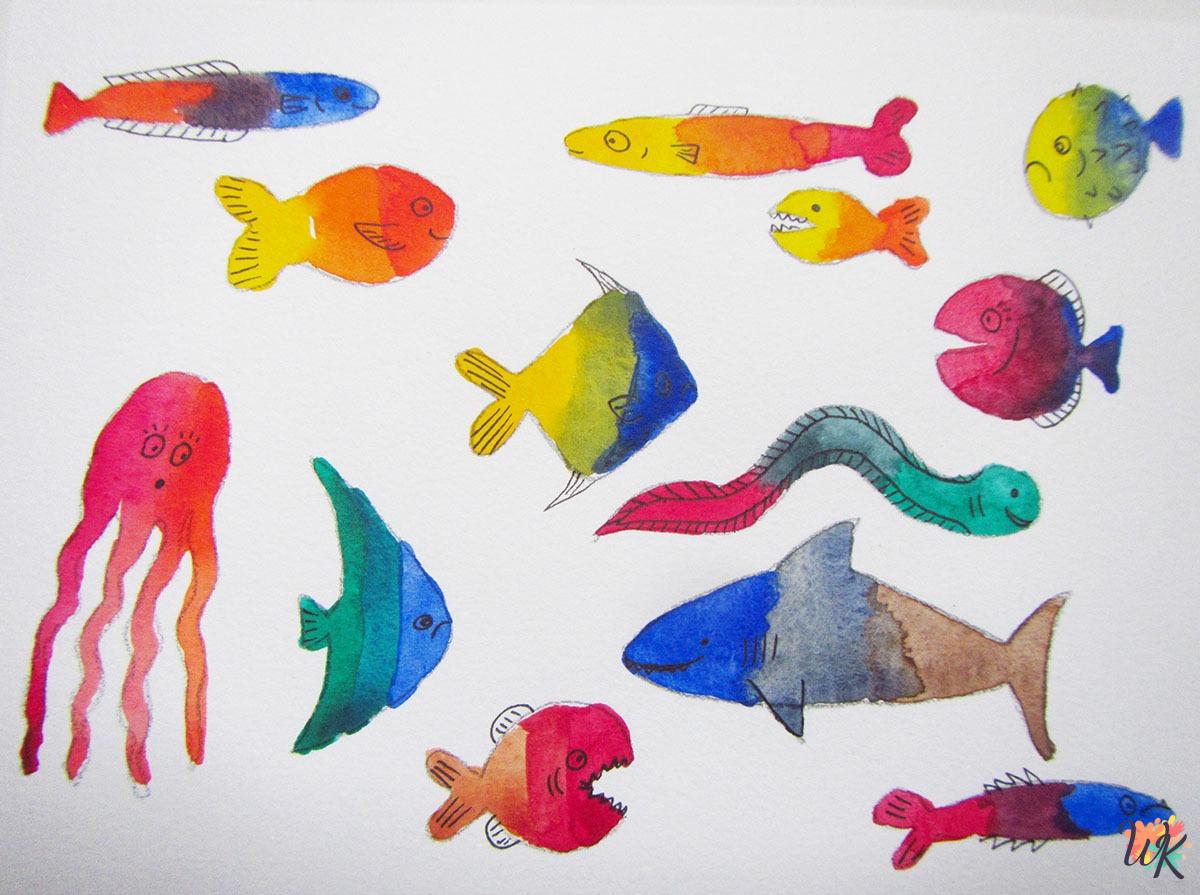How to Mix Watercolors to Color for Children? This article will guide you through the process of mixing watercolors to create vibrant colors for your child’s artwork. Watercolor painting is a fun and creative activity that encourages children to explore their artistic abilities and express their imagination. Follow our step-by-step instructions and let’s dive into the colorful world of watercolor painting!

Introduction
This will provide guidance on mixing watercolors to achieve different shades and hues, allowing children to create beautiful artwork using a variety of colors. Watercolor painting is versatile and offers endless possibilities for creative expression, even with just a few basic techniques.
Materials Needed
Before we begin, gather the following materials:
- Watercolor paint set
- Watercolor paper or thick drawing paper
- Paintbrushes of various sizes
- Palette or a plastic plate
- Water container
- Paper towels or a cloth
Preparing the Workspace
To ensure a smooth and enjoyable painting experience, set up a dedicated workspace for your child. Cover the table with a plastic sheet or newspaper to protect it from paint spills. Place all the materials within easy reach to encourage creativity and minimize interruptions.
Basic Color Mixing Techniques
Before diving into specific color combinations, it’s essential to understand some basic color mixing techniques. These techniques will enable your child to create a wide range of colors:
- Wet-on-wet technique: Wet the paper with clean water before applying the paint. This technique allows colors to blend more easily and produces softer gradients.
- Dry brushing: Use a relatively dry brush with concentrated paint to create texture and add details to the painting.
- Layering: Let each layer of paint dry before applying the next layer to prevent colors from mixing and to achieve vibrant, translucent effects.
Mixing Primary Colors
Watercolor paints typically come in primary colors: red, yellow, and blue. By mixing these primary colors, your child can create a variety of secondary and tertiary colors. Here are some simple color combinations to get started:
- Red + Blue = Purple
- Red + Yellow = Orange
- Yellow + Blue = Green
Encourage your child to experiment with different ratios of paint to achieve lighter or darker shades of each color.
Creating Secondary Colors
Secondary colors are created by mixing equal parts of two primary colors. Let’s explore some secondary color combinations:
- Purple + Yellow = Brown
- Orange + Blue = Brown
- Green + Red = Brown
Brown is a versatile color that can be used to add depth and earthiness to paintings.

Exploring Color Variations
Aside from primary and secondary colors, children can mix different ratios of colors to achieve a variety of shades and tones. For example:
- Light Blue: Add a small amount of blue to a larger amount of water to create a light, delicate shade of blue.
- Dark Green: Mix more blue than yellow to create a deeper, richer shade of green.
Encourage your child to experiment with different color combinations and ratios to unleash their creativity.
Painting Techniques
Once the colors are mixed, it’s time to apply them to paper. Here are a few painting techniques that your child can explore:
- Wash: Apply a light, even layer of paint across the paper to create a smooth and translucent effect.
- Wet-on-dry: Apply paint onto dry paper for more defined lines and shapes.
- Splattering: Dip the brush in paint and flick it onto the paper to create interesting textures.
Encourage your child to experiment with different brushstrokes and techniques to add depth and texture to their artwork.
Cleaning Up
After the painting session, it’s essential to clean up properly. Rinse the paintbrushes thoroughly with water and remove excess paint. Allow the paints and brushes to dry before storing them away. Clean the palette or plastic plate and discard any unused paint. Finally, wipe the workspace clean with a damp cloth or paper towel.
Conclusion
One way to enhance your child’s creativity and artistic abilities is by encouraging them to make watercolor paintings. You can guide them using the instructions and color mixing techniques provided. It’s important to let your child explore various painting techniques and color combinations, while making their artwork. Remember, the process of painting with watercolors should be enjoyable for them.

FAQs
Can you make the color black by blending watercolors together?
To create a dark and rich black color, you can mix complementary colors such as red and green or blue and orange.
How can I make my watercolor paintings more vibrant?
To achieve more intense colors on paper, use paint that is concentrated and reduce the quantity of water used.
How can I correct the colors if I mixed the wrong ones by mistake?
If you accidentally mix the wrong colors, there’s no need to stress. You can either try to correct it by layering another color on top or embrace the new color and incorporate it into your artwork.
Is it possible to mix watercolors with paints of different kinds?
To create unique effects, you can experiment with mixing watercolors and other water-based paints. However, make sure to check if the paints are compatible with each other before using them in your artwork. Keep in mind that watercolor paints are usually the recommended choice.
What is the drying time for watercolor paintings?
The amount of time it takes for watercolor paintings to dry depends on different factors like paint layer thickness, humidity, and ventilation. Generally, most watercolor paintings dry within a few hours, but thicker or heavily layered paintings may require more time.
Watercolor mixing can be a fun and educational activity for kids. By following instructions and utilizing their creativity, children can create beautiful art with vivid colors. Simply gather the necessary materials, prepare the workspace, and encourage your child’s imagination to explore the colorful world of watercolor painting!

Hi there! My name is Becky Gomez, and I was born on December 12th, 1992 in the great United States of America. I am passionate about all things art and have always dreamed of sharing my love of art with others.
To pursue my passion, I attended some of the most prestigious art and painting schools in the United States. I earned a Bachelor of Fine Arts degree from the Rhode Island School of Design, followed by a Master’s degree in Art Education from Columbia University in New York.
Currently, I am an elementary school art teacher, inspiring and guiding young minds to explore their creativity and imagination. I believe that art education is an essential aspect of a well-rounded education and can be used to teach children valuable skills and important life lessons.
Outside of work, I am a savvy SEO professional and have created 5 popular coloring websites: ColoringpagesWk.com, Kleurplatenwk.nl, Disegnidacolorarewk.com, Dibujosparacolorearwk.com, and Coloriagewk.com. My goal with these websites is to provide fun and engaging resources for children to learn about art while also having fun.
I am passionate about using my talents and expertise to make a positive impact on the world, and I believe that education and the arts are the keys to achieving this goal. I am always looking for new opportunities to create and innovate, and I can’t wait to see what the future holds.
Contact Info:
Street: 950 Doyers Street
City: New York
State: NY
Phone: +1202-555-0126
Zipcode: 10013
Country: United States
